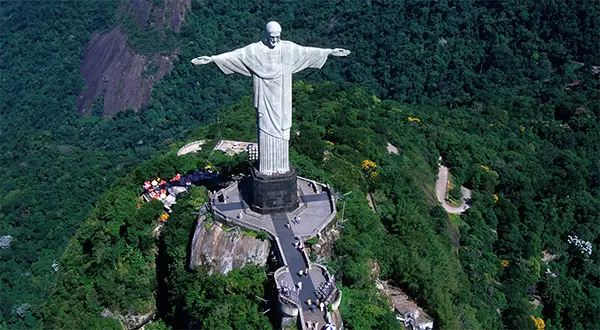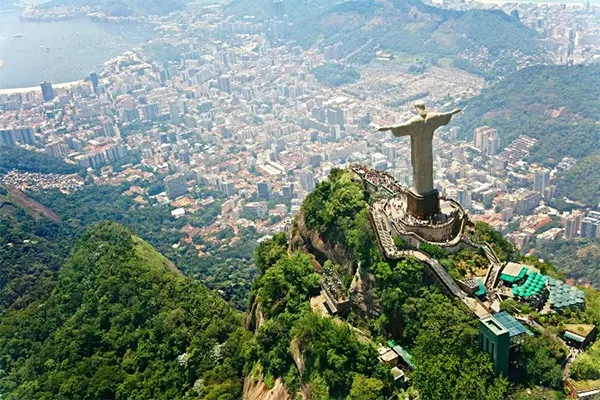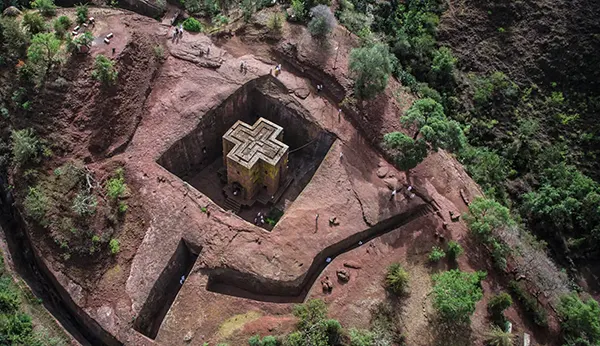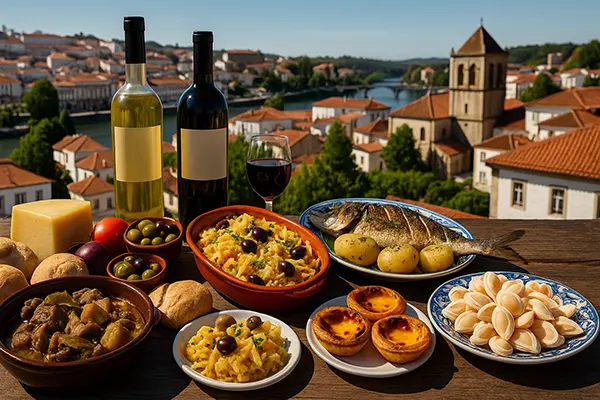
Christ the Redeemer (Rio de Janeiro): How to Get There, Best Time and Views from the Top
Christ the Redeemer, standing majestically on Mount Corcovado in Rio de Janeiro, is one of the most recognised landmarks in the world. This colossal statue of Jesus Christ symbolises peace and faith, drawing millions of visitors each year. In 2025, the monument remains one of Brazil’s most visited attractions, offering not only a deep spiritual experience but also some of the most spectacular panoramic views over the city and its surrounding natural beauty.
How to Reach Christ the Redeemer
The statue is located at the summit of Corcovado Mountain within the Tijuca National Park, about 710 metres above sea level. There are several ways to reach the site, depending on budget, time, and personal preference. The most popular and scenic option is the Corcovado Train, which departs from the Cosme Velho station and winds through the lush rainforest for about 20 minutes before arriving at the top station near the monument. Tickets can be purchased online in advance, and in 2025, digital booking systems ensure fast and secure reservations.
For those seeking a more flexible journey, shuttle vans operate from designated pickup points across Rio, such as Largo do Machado and Copacabana. These licensed vans provide direct access to the upper parking area near the statue. Taxis and rideshare services like Uber are also permitted up to the authorised visitor point, from where an official minibus completes the final ascent. Driving independently is not allowed, as access roads within Tijuca National Park are restricted to preserve the environment.
For the adventurous, hiking trails lead through the forest to the summit. The most famous route, Parque Lage to Corcovado, offers a challenging three-hour trek surrounded by wildlife and dense vegetation. Hikers must register before entering and are advised to start early in the morning to avoid heat and ensure safety. While it demands effort, the reward is a breathtaking approach to one of the modern wonders of the world.
Entrance Fees and Visitor Tips
Entrance fees vary depending on the method of access. The Corcovado Train ticket costs around R$97 in high season and R$77 in low season (approximately €18–22). Shuttle services are slightly cheaper, while hikers only pay the park’s environmental fee of R$10. All options include entry to the monument’s viewing platforms. Payment by credit card or mobile apps is accepted, reflecting Rio’s growing digital tourism infrastructure in 2025.
Visitors should bring sun protection, comfortable shoes, and water, as the tropical climate can be unpredictable. Early mornings and late afternoons are less crowded and provide the best light for photography. Security in the area has improved significantly in recent years, with increased police patrols and surveillance within tourist zones, ensuring a safe and pleasant experience for all visitors.
It is also advisable to check weather forecasts before planning the visit. Cloudy days can obscure the view entirely, while clear skies reveal Rio’s iconic landmarks, including Sugarloaf Mountain, Copacabana Beach, and the vast Guanabara Bay. For those seeking the perfect photograph, visibility conditions are key.
The Best Time to Visit
Rio de Janeiro’s tropical climate makes Christ the Redeemer accessible year-round, but certain months offer more comfortable conditions. The dry season, from May to October, provides cooler temperatures and clearer skies, ideal for sightseeing. During this period, humidity levels drop, making the climb or train ride more pleasant and the views more striking.
Summer months (December to March) bring higher temperatures and more tourists. While the atmosphere is festive—especially during Carnival in February—visitors should expect longer queues and higher prices. However, the vibrant city energy during this season can make the experience unforgettable for those who enjoy the buzz of cultural events.
Sunrise and sunset hours provide the most stunning light for photography. Early mornings offer a calm atmosphere and fewer crowds, while sunsets paint the city in warm, golden hues. For travellers aiming to capture both day and night views, visiting in the late afternoon allows time to witness the transformation of Rio as the city lights begin to twinkle beneath the statue’s illuminated presence.
Seasonal Events and Special Access
Throughout the year, special events take place at the Christ the Redeemer site. Religious ceremonies, such as Easter and Christmas masses, draw thousands of pilgrims. These occasions often include extended opening hours and special light displays that illuminate the statue in symbolic colours. In 2025, organisers have also introduced environmentally friendly lighting systems powered by renewable energy, reflecting Brazil’s growing commitment to sustainability.
Visitors during national holidays should plan ahead, as entry tickets can sell out days in advance. It is recommended to check the official Corcovado Train website or the Rio tourism portal for updates on schedules, maintenance, or temporary closures. Booking online is the most reliable way to secure a time slot, especially during weekends.
Private guided tours are available for those seeking a more personalised experience. These tours often include skip-the-line access, multilingual guides, and transfers from hotels. While they come at a higher cost, they are ideal for travellers who wish to explore the monument’s history and architecture in greater depth.

The View from the Top
Standing at the foot of Christ the Redeemer offers one of the most breathtaking panoramas in the world. The 360-degree view stretches across Rio’s coastline, the Maracanã Stadium, and the endless blue of the Atlantic Ocean. On clear days, visitors can even spot the distant Serra dos Órgãos mountains. The combination of urban landscapes and natural beauty perfectly encapsulates the soul of Rio de Janeiro.
The monument itself stands 30 metres tall on an 8-metre pedestal, with outstretched arms spanning 28 metres. Constructed from reinforced concrete and covered with soapstone, it was completed in 1931 and declared one of the New Seven Wonders of the World in 2007. In 2025, ongoing maintenance ensures the statue’s preservation against erosion and lightning strikes, using advanced materials developed by Brazilian engineers.
Accessibility improvements have made the site inclusive for all visitors. Modern lifts and escalators transport guests from the arrival area to the viewing platform, allowing people with mobility challenges to enjoy the view comfortably. Information panels in multiple languages provide insights into the monument’s cultural and historical significance.
Photography and Local Attractions
Photographers will find endless inspiration at the summit. The interplay of light, clouds, and Rio’s contrasting geography creates unique compositions at every angle. Professional photographers often recommend using a wide-angle lens to capture the full expanse of the view and the statue simultaneously. Drone photography is not permitted for safety reasons, but ground shots remain equally impressive.
After visiting the statue, tourists can explore nearby attractions within Tijuca National Park, such as the Vista Chinesa viewpoint, the Parque Lage mansion, or the tranquil waterfalls hidden in the forest. These spots offer quieter alternatives to the busy summit, ideal for nature lovers and those wishing to experience Rio’s green side.
Whether seen from afar or up close, Christ the Redeemer continues to embody the spirit of Rio de Janeiro—welcoming, vibrant, and awe-inspiring. Its enduring presence reminds travellers that some wonders of the world are not only seen but deeply felt, offering both a visual and emotional journey worth remembering.




